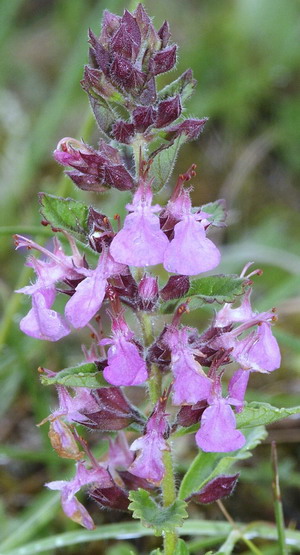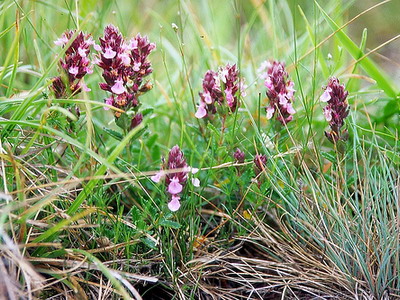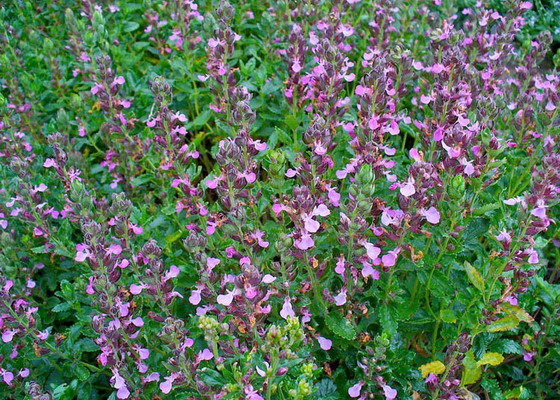 Common Dubrovnik (Teucrium chamaedrys) is a perennial perennial of the genus Dubrovnik (Teucrium), of the labiate or lamb family (Lamiaceae). Medicinal and ornamental plant.
Common Dubrovnik (Teucrium chamaedrys) is a perennial perennial of the genus Dubrovnik (Teucrium), of the labiate or lamb family (Lamiaceae). Medicinal and ornamental plant.
- Family: Lamiaceae.
- Homeland: southern and central Europe, northern Africa.
- Rhizome: creeping.
- Stem: straight, pubescent.
- Leaves: ovate or oblong.
- Fruit: Nut.
- Reproductive ability: propagated by division of rhizomes or shoots.
- Illumination: sun, tolerates light partial shade.
- Watering: moderate.
- Content temperature: frost-resistant.
- Flowering time: July – August.
Description of the Dubrovnik flower
In nature, the common dubrovnik grows in the southern and central regions of Europe, on the territory of the CIS countries – in the south of the European part, in the Caucasus, in Turkmenistan. It is found in North African countries: Tunisia, Algeria, Morocco. Habitats – forest edges, thickets of bushes , light forests, rocky slopes in the steppes.

Perennial compact shrub 10-40 cm high, with straight, lignified stems below, covered with thick, protruding hairs. The branches are often curved, ascending, reddish or pale green. The leaves are dark green, bracts sometimes lilac, 1-4 cm long, ovate, rarely oblong, numerous, have a wedge-shaped base and teeth, 4-6 from each edge. The flowers are small, red-pink, bloom in the axils of the upper leaves, formed into false whorls, collected in turn in a spike-shaped inflorescence. Dubrovnik flower is bisexual, on a short pedicel. Teeth of bell-shaped calyx with dense short hairs and long cilia along the edge, purple corolla, 10-13 mm long, with upper lip split into two halves. The fruit is a brown mesh or wrinkled nut, ripens in late August – September.
Dubrovnik application
As an ornamental plant, dubrovnik is grown on alpine hills, borders and borders. Among the advantages are long flowering (from mid to late summer), the ability to winter without shelter, as well as unpretentiousness to soils and ease of reproduction. It is practically not damaged by diseases and pests. Sometimes it is cultivated as a spicy-flavoring plant, used for salads, first courses.

Dubrovnik in the photo.
The flower is not only decorative, but also has healing properties. In folk medicine, Dubrovnik grass is used, harvested during the flowering period. The plant contains an essential oil, the main component of which is the hydrocarbon caryophyllene, as well as ascorbic acid, tannins and bitter substances. It has anti-inflammatory, bactericidal, astringent, diuretic, restorative and tonic effect. Dubrovnik flowers are used in homeopathy. The roots contain tannins, they are used for tanning leather, to obtain orange, yellow, brown and gray-green dye.







